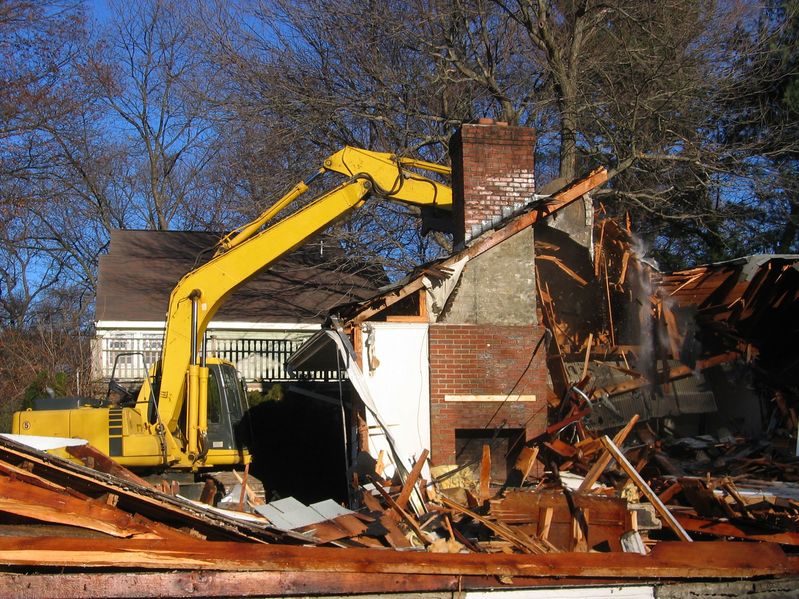What are the basic steps to demolish a house?
The first place you need to start is to locate a licensed and insured demolition contractor and get and estimate or proposal in writing. The estimate should state whose responsibility it is to pay for and pull permits for doing the work – if required.
The house should be inspected for hazardous materials such as asbestos or lead paint. Proper procedures for remediation need to be followed.
Utility providers – gas and sewer, water and electricity should be contacted to have everything disconnected prior to demolition of the home.
Work with your contractor if you have salvageable materials in your home. They can help you recover anything that can be resold or donated and should be done prior to tearing down the house.
Demolishing a house can take several days and involves heavy equipment like a hydraulic excavator. This piece of equipment will tear down the house and place unwanted refuse into the back of a dumpster or truck.
All demolition debris should be removed from the site – this means “down to the dirt” removal of everything – including the home’s foundation.
Whether grading or basement excavation, your demolition contractor will often use much of the same heavy equipment to prepare your site for a new home if you’re rebuilding on the same spot. Work with your demolition contractor to save some time and money on the new project excavation needs.
How much does it cost to demolish a house? The numbers vary widely based on the specific needs of your demolition project. We make it easy for you, just contact us to request a home demolition cost estimate!
Prior to demolishing a house, you will need to pull a permit in most cases. Your local and state municipalities determine the necessary permits. They may also have different rules for home demolition as they relate to notifications: hours of demolition, disposal of debris, noise etc. In most cases, the demolition company is well informed about local regulations and will pull permits on your behalf. Clarifying all the services up front with the contractor is important.
Prior to being demolished, most states require that older homes or building be inspected for the presence of asbestos, lead paint and other hazardous materials. Proper abatement procedures need to be followed if your home or building contains hazardous materials. Ask your demolition contractor if they provide these services or if you will need to work with an environmental remediation specialist to complete the removal process of hazardous materials.
Is deconstruction an option for the demolition of your home? Basically, deconstruction is the process of salvaging manually as many materials inside the home. Deconstruction projects can achieve recycle or reuse rates of over 70% according to the Environmental Protection Agency.
Because interior demolition crews take glass from windows, remove individual doors, light fixtures, copper pipe, tubs and sinks and even the nails in the floor boards, deconstruction takes much longer and costs significantly more – 2-3 times as much – than typical demolition methods.
Contact us today and we’ll be more than happy to guide you through the process!
Connect with us: Facebook – Twitter – LinkedIn – YouTube – Google +

